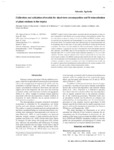Por favor, use este identificador para citar o enlazar este ítem:
http://www.alice.cnptia.embrapa.br/alice/handle/doc/979454Registro completo de metadatos
| Campo DC | Valor | Lengua/Idioma |
|---|---|---|
| dc.contributor.author | NASCIMENTO, A. F. do | pt_BR |
| dc.contributor.author | MENDONÇA, E. de S. | pt_BR |
| dc.contributor.author | LEITE, L. F. C. | pt_BR |
| dc.contributor.author | SCHOLBERG, J. | pt_BR |
| dc.contributor.author | NEVES, J. C. L. | pt_BR |
| dc.date.accessioned | 2014-02-11T11:11:11Z | pt_BR |
| dc.date.available | 2014-02-11T11:11:11Z | pt_BR |
| dc.date.created | 2014-02-11 | pt_BR |
| dc.date.issued | 2012 | pt_BR |
| dc.identifier.citation | Scientia Agricola, Piracicaba, v. 69, n. 6, p. 393-401, Nov./Dec. 2012. | pt_BR |
| dc.identifier.uri | http://www.alice.cnptia.embrapa.br/alice/handle/doc/979454 | pt_BR |
| dc.description | Insight of nutrient release patterns associated with the decomposition of plant residues is important for their effective use as a green manure in food production systems. Thus, this study aimed to evaluate the ability of the Century, APSIM and NDICEA simulation models for predicting the decomposition and N mineralization of crop residues in the tropical Atlantic forest biome, Brazil. The simulation models were calibrated based on actual decomposition and N mineralization rates of three types of crop residues with different chemical and biochemical composition. The models were also validated for different pedo-climatic conditions and crop residues conditions. In general, the accuracy of decomposition and N mineralization improved after calibration. Overall RMSE values for the decomposition and N mineralization of the crop materials varied from 7.4 to 64.6 % before models calibration compared to 3.7 to 16.3 % after calibration. Therefore, adequate calibration of the models is indispensable for use them under humid tropical conditions. The NDICEA model generally outperformed the other models. However, the decomposition and N mineralization was not very accurate during the first 30 days of incubation, especially for easily decomposable crop residues. An additional model variable may be required to capture initial microbiological growth as affected by the moisture dynamics of the residues, as is the case in surface residues decomposition models | pt_BR |
| dc.language.iso | eng | pt_BR |
| dc.rights | openAccess | eng |
| dc.subject | Modeling | pt_BR |
| dc.subject | Nutrient cycling | pt_BR |
| dc.subject | Organic agriculture | pt_BR |
| dc.title | Calibration and validation of models for short-term decomposition and N mineralization. | pt_BR |
| dc.type | Artigo de periódico | pt_BR |
| dc.date.updated | 2018-02-01T11:11:11Z | pt_BR |
| dc.subject.nalthesaurus | soil organic matter | pt_BR |
| riaa.ainfo.id | 979454 | pt_BR |
| riaa.ainfo.lastupdate | 2018-02-01 -02:00:00 | pt_BR |
| dc.identifier.doi | https://doi.org/10.1590/S0103-90162012000600008 | eng |
| dc.contributor.institution | ALEXANDRE FERREIRA DO NASCIMENTO, CNPS | pt_BR |
| dc.contributor.institution | EDUARDO DE SÁ MENDONÇA, UFV/UFES | eng |
| dc.contributor.institution | LUIZ FERNANDO CARVALHO LEITE, CPAMN | eng |
| dc.contributor.institution | JOHANNES SCHOLBERG, University of Wageningen | eng |
| dc.contributor.institution | JULIO CESAR LIMA NEVES, UFV. | eng |
| Aparece en las colecciones: | Artigo em periódico indexado (CNPS)  | |
Ficheros en este ítem:
| Fichero | Descripción | Tamaño | Formato | |
|---|---|---|---|---|
| artigoalexandre2.pdf | 620,15 kB | Adobe PDF |  Visualizar/Abrir |









